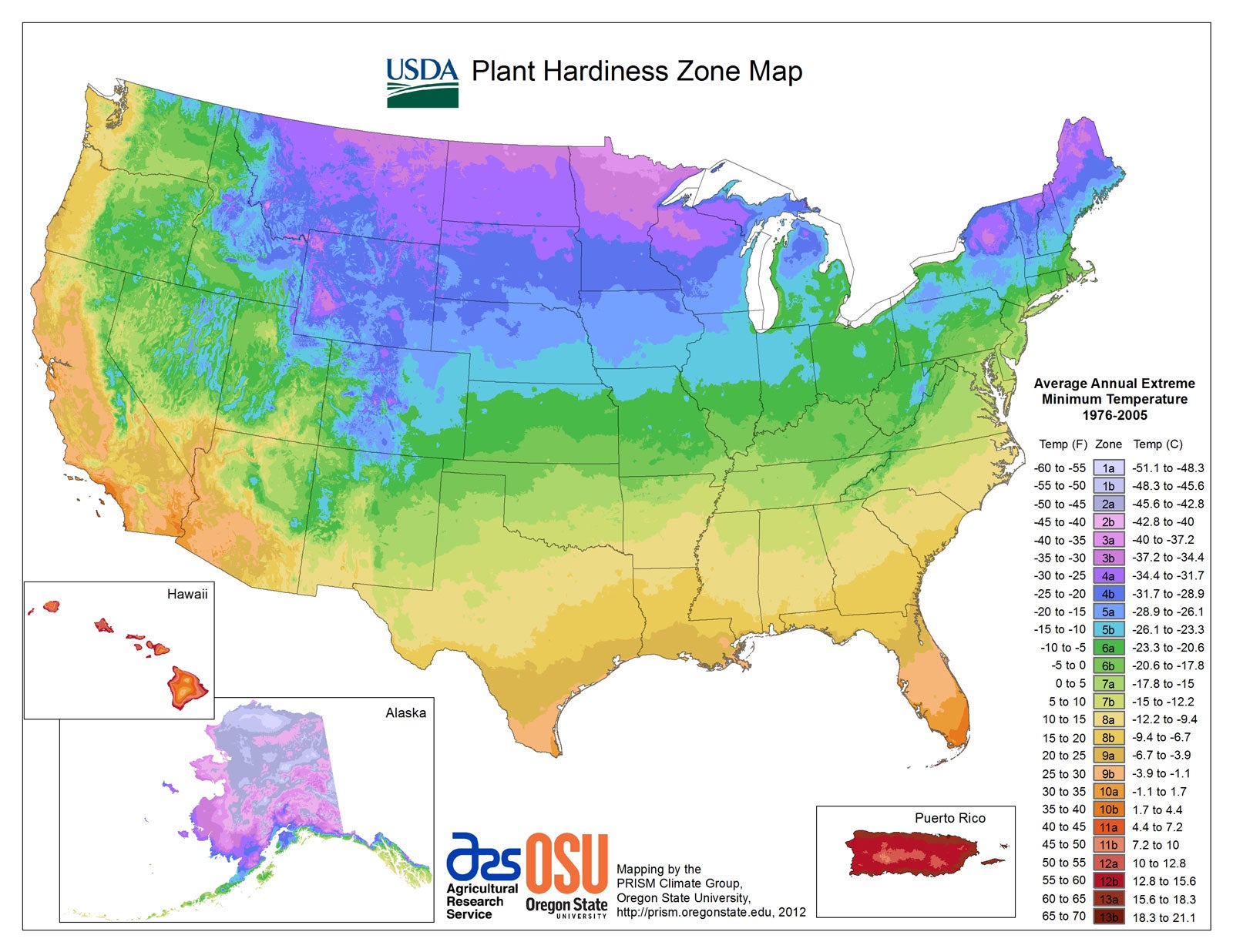USDA Zone Explanation – What Do Hardiness Zones Mean Exactly


If you are new to gardening, you may be confused by some of the terminology associated with plants. For instance, a USDA zone explanation may be necessary. This is a useful system for determining what plants will survive and grow in certain areas of North America. When you understand how these hardiness zones work, you will be able to better plan your garden.
What Do Hardiness Zones Mean?
The USDA plant hardiness map is created and updated every few years by the U.S. Department of Agriculture. It divides North America into eleven zones by minimum average annual temperatures. The lower the number is, the lower the temperatures in that zone.
Each zone represents ten degrees of temperature difference. Each zone is also divided into “a” and “b” segments. These represent five degrees of temperature difference. For example, zone 4 represents minimum temperatures between -30 to -20 degrees F. (-34 to -29 C.). The a and b subdivisions represent -30 to -25 degrees F. (-34 to -32 C.) and -25 to -20 degrees F. (-32 to -29 C.).
Hardiness refers to how well a plant will survive cold temperatures. Where the USDA zones fall short; however, is that they don’t account for other factors. These include freeze dates, freeze-thaw cycles, the effects of snow cover, precipitation, and elevation.
How to Use Hardiness Zone Information
Understanding hardiness zones means you can pick plants for your garden that will be most likely to survive your local winters. The zones are not important for annuals since these are plants you would only expect to survive the summer months, or one season. For perennials, trees, and shrubs though, be sure to check the USDA zones before you put them in your garden.
The limitations of the USDA zones are most felt in the western U.S. If you live in this area, you may want to use the Sunset climate zones. This system uses more than just the minimum temperatures to determine which plants grow best where. They also use the length of the growing season, summer temperatures, wind, humidity, and rainfall.
No zoning system is perfect and even within your own garden you may have important microclimates that impact how plants grow. Use the USDA or Sunset zones as a guide and always check them to give you the best chance of success in your garden.
Gardening tips, videos, info and more delivered right to your inbox!
Sign up for the Gardening Know How newsletter today and receive a free copy of our e-book "How to Grow Delicious Tomatoes".

Mary Ellen Ellis has been gardening for over 20 years. With degrees in Chemistry and Biology, Mary Ellen's specialties are flowers, native plants, and herbs.
-
 Looking For Plants To Give You The Soft And Fuzzies? Try These 5 Fuzzy Leaf Plant Options
Looking For Plants To Give You The Soft And Fuzzies? Try These 5 Fuzzy Leaf Plant OptionsLovers of texture, drama, silver foliage and tactile plants will adore these special sensory garden additions. These fuzzy leaf plant options will leave you all aglow
By Susan Albert
-
 Get Ready For A Summer Of Hummers! Grow These Full Sun Hummingbird Plants and Flowers
Get Ready For A Summer Of Hummers! Grow These Full Sun Hummingbird Plants and FlowersIf you’re lucky enough to enjoy a sunny backyard, make sure you are maxing out on your pollinator opportunities and grow these full sun hummingbird plants and flowers
By Tonya Barnett